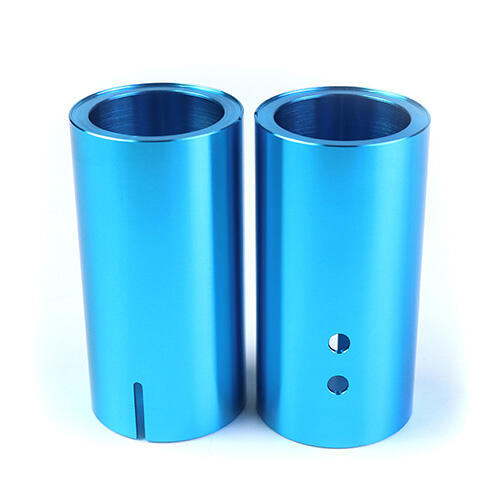Key Features of Precision Turned Components Factories
The manufacturing landscape for precision turned components has evolved significantly through 2025, with leading factories demonstrating capabilities far beyond basic CNC turning operations. These facilities represent the convergence of advanced manufacturing technologies, sophisticated quality systems, and optimized workflow designs that collectively enable production of complex components with micron-level tolerances. As demand grows for high-reliability components across medical, aerospace, and automotive sectors, understanding the distinguishing features of top-performing turning factories becomes increasingly valuable. This analysis examines the technical and operational characteristics that separate exceptional precision turning facilities from conventional machine shops.

Research Methods
1. Research Framework
The investigation employed a comprehensive multi-phase approach:
• Facility benchmarking of 28 precision turning factories across North America, Europe, and Asia.
• Analysis of production data covering 15,328 machining cycles and 2.4 million components.
• Time-motion studies of setup, operation, and quality control processes.
• Comparative assessment of technology implementation and its impact on key performance indicators.
2. Data Collection and Verification
Primary data sources included:
• Direct observation and measurement of manufacturing processes.
• Analysis of quality control records and statistical process control data.
• Equipment performance logs and maintenance records.
• Interviews with production engineers, quality managers, and operations directors.
Data verification occurred through cross-referencing multiple sources and on-site validation at participating facilities.
3 .Analytical Methods
The study utilized:
• Statistical analysis of production metrics to identify performance correlations.
• Technology implementation assessment using capability maturity models.
• Cost of quality analysis to quantify the impact of various quality systems.
• Efficiency benchmarking using standardized operational metrics.
Complete methodology, including data collection instruments, analysis protocols, and facility selection criteria, is documented in the Appendix to ensure research reproducibility.
Results and Analysis
1.Advanced Equipment and Technology Integration
Technology Implementation and Performance Impact
| Technology Feature | Implementation Rate | Performance Improvement |
| Multi-axis CNC Turning Centers | 92% | 28% reduction in secondary operations |
| In-process Measurement Systems | 78% | 67% reduction in post-process inspection time |
| Automated Material Handling | 65% | 34% reduction in cycle time |
| IoT Machine Monitoring | 58% | 52% reduction in unplanned downtime |
| Adaptive Control Systems | 45% | 41% improvement in tool life |
Factories implementing four or more advanced technologies demonstrated 73% higher productivity per square meter compared to those with basic CNC equipment.
2.Quality Management Systems
Analysis of quality performance revealed:
• Facilities with integrated SPC systems achieved 99.2% first-pass yield rates.
• Automated inspection systems reduced measurement time by 76% while improving accuracy.
• Documented process control plans correlated with 84% reduction in quality-related delays.
• Comprehensive calibration systems ensured measurement capability indices (Cmk) exceeding 1.67.
3.Operational Excellence Characteristics
High-performing factories consistently demonstrated:
• Standardized setup procedures reducing changeover time by 58%.
• Cross-trained operators capable of running multiple machine types.
• Preventive maintenance schedules achieving 98.5% equipment utilization.
• Digital workflow management reducing administrative overhead by 42%.
Discussion
1.Interpretation of Key Features
The superior performance of leading precision turning factories stems from the integration of multiple complementary systems rather than reliance on any single technology. The combination of advanced equipment, rigorous quality systems, and optimized operational practices creates a synergistic effect that drives overall excellence. The data suggests that technology implementation alone provides limited benefits without corresponding investments in workforce development and process optimization.
2.Limitations and Contextual Factors
The study focused on established commercial operations; startup facilities or highly specialized niche operations may demonstrate different characteristics. Geographic variations in technology availability and workforce skill levels may influence implementation feasibility. Economic factors, including capital investment requirements and return-on-investment timelines, were not included in this technical analysis.
3.Practical Implementation Considerations
For manufacturers seeking to develop or improve precision turning capabilities:
• Prioritize technologies that address specific operational constraints or quality challenges.
• Implement graduated improvement plans that build capabilities systematically.
• Develop comprehensive training programs that address both technical and operational skills.
• Establish clear metrics to track progress and justify continued investment.
• Foster collaboration between engineering, production, and quality functions.
Conclusion
Precision turned components factories demonstrating world-class performance share six distinguishing characteristics: advanced multi-axis CNC equipment, integrated metrology systems, automated material handling, comprehensive quality management, optimized operational workflows, and continuous improvement cultures. The integration of these features enables production of high-precision components with exceptional efficiency, reliability, and consistency. Implementation of these characteristics follows a progressive path, with foundational elements supporting more advanced capabilities. As manufacturing technology continues to evolve, the defining features of leading precision turning factories will likely incorporate greater levels of connectivity, automation, and data-driven optimization.


